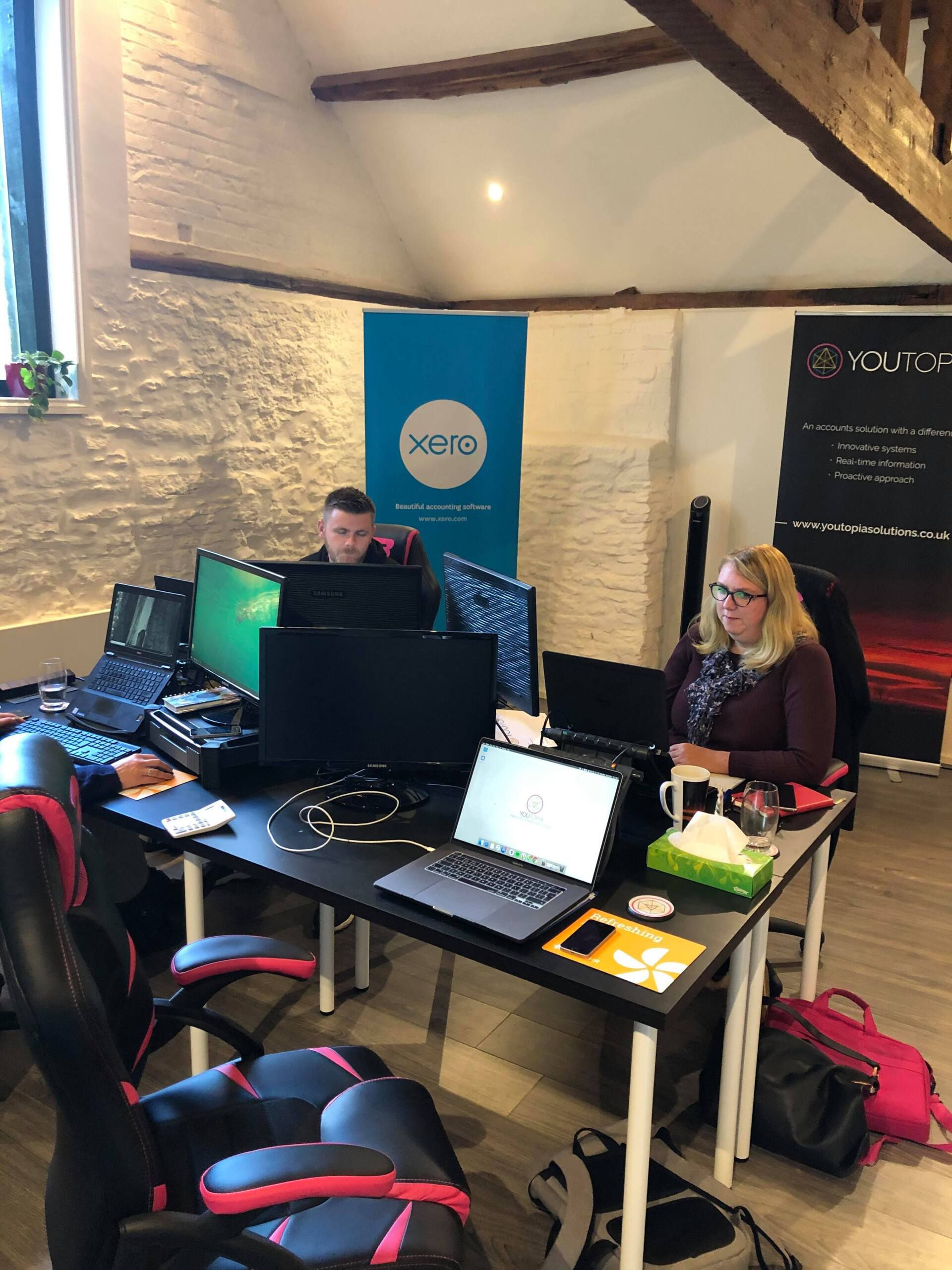October 20 Newsletter
Business update
Why is it much harder to create a high-performing virtual team?
With a completely virtual team, it’s hard to manage productivity and performance. Especially in the situation that many of us find ourselves in at the moment: trying to work from home, potentially with our partner and with the uncertainty of when or if we will ever get back to ‘normal.’ As hard as it may be, we have to accept that we are going to be in this position for the foreseeable future; to make it easier on ourselves, we need to start adapting to working virtually.
To help you do this, we wanted to first look at why it’s much harder to create a high-performing virtual team.
Why is it harder to create a high-performing team (when everyone is working virtually)
You can’t manage by walking around the office
– as not everyone is working from the office, you can’t just walk around and check that everyone is doing what they should be.
It’s harder to generate trust between team members –
due to the lack of proximity, it is hard for team members to put their trust in one another.
You have to adopt an ‘outcome-based’ approach –
the hardest transition to make is having to adopt a results-based approach rather than a time-based approach. You have to trust your team to get on and do the work without being able to stand over them.
It’s much easier to have communication breakdowns –
misunderstandings occur far more often over email and digital platforms which can cause bottlenecks, frustration, and even conflict between team members.
It’s difficult to keep the communication going –
when everyone is working in different places and potentially at different times, it can be hard to keep communication consistent (especially since it’s easy to ignore emails and messages rather than a person).
It’s hard to get the quieter members of the team to speak up –
quieter and more introverted members become even more so when working virtually. It can be harder to get them to speak up in a virtual meeting rather than in person.
You can’t create that ‘team feeling’ as easily –
bonding is more difficult when people don’t work closely in the same place so team members may not be as close or cohesive as they may potentially be if they worked in the same office.
What you can do as Team Leader to increase performance
It’s very easy to let things slip by you when you’re trying to manage a completely virtual team from home, but that has a massive negative impact on productivity, motivation, and your business as a whole. So what can you do about it? To increase the performance of your virtual team, you must:
Acknowledge that things have changed and work with each individual to find what works for them – a lot of people are working from home in different locations and some are struggling. Don’t assume that nothing has changed and just carry on as before.
Create a workflow plan and hold people accountable for what they need to do – create an overall workflow plan for each month and assign individuals their tasks and deadlines. This helps them to see where they fit into the team as a whole and it ensures that they get their deliverables in on time.
Set specific agendas for meetings – the mistake that some managers make is letting meetings become a talking shop. Yes, it’s important to do a temperature check with everyone involved, but this time isn’t to catch up. You need to make sure that you discuss everything that you need to so that everyone can go off and get what they need to do.
Tackle any performance issues or workflow issues immediately – if you don’t nip any issues in the bud quick enough, they can become a far bigger problem than they need to. Don’t let that happen and tackle them when they are manageable.
Hopefully, now you understand why it’s so difficult to create a high-performing virtual team and what you need to do to foster one.
Accounting update
Last week Rishi Sunak announced the Government's Winter Economy Plan 2020, to provide additional support to businesses and employees.
Job Support Scheme
A new Job Support Scheme will be introduced from 1 November to protect jobs where businesses are facing lower demand over the winter months due to coronavirus (COVID-19).
Under the scheme, which will run for six months, the government will contribute towards the wages of employees who are working fewer than normal hours due to decreased demand.
Employers will continue to pay the wages for the hours staff work. For the hours not worked, the government and the employer will each pay one third of their usual wages (capped at £697.92 per month). Employers will need to meet their share of the pay for unworked hours, and all employer National Insurance contributions and statutory pension contributions, from their own funds. This means that employees will receive at least two thirds of their usual wages for the hours not worked.
To be eligible, employees must:
be registered on PAYE payroll on or before 23 September 2020. This means a Real Time Information (RTI) submission notifying payment in respect of that employee must have been made to HMRC on or before 23 September 2020.
work at least 33% of their usual hours. The government will consider whether to increase this minimum hours threshold after the first three months of the scheme.
Further eligibility criteria is available on GOV.UK by searching ‘Job Support Scheme factsheet’.
The Job Support Scheme will be open to employers across the UK even if they have not previously applied under the Coronavirus Job Retention Scheme (CJRS) which ends on 31 October.
The Job Support Scheme will start from 1 November and employers will be able to claim in December. Grants will be paid on a monthly basis.
The scheme will operate in addition to the Job Retention Bonus. Businesses can benefit from both schemes in order to help protect viable jobs.
For information on what is covered by the grant, which employers and employees are eligible, and how to claim, search 'Job Support Scheme factsheet' on GOV.UK.
SEISS Grant Extension
The government is continuing its support for millions of self-employed individuals by extending the Self-Employment Income Support Scheme (SEISS) grant. Self-employed individuals and members of partnerships who are eligible for the SEISS and are actively continuing trading but are experiencing reduced demand due to coronavirus (COVID-19), will be eligible for a further SEISS grant to provide support over the winter months.
The first grant will cover a three-month period from the start of November 2020 until the end of January 2021. It will be a taxable grant to cover 20% of average monthly trading profits, paid out in a single instalment covering three months’ worth of profits, and capped at £1,875 in total.
An additional second grant, which may be adjusted to respond to changing circumstances, will be available for self-employed individuals to cover the period from February to the end of April – ensuring government support continues right through to next year.
More information will be published in due course but in the meantime, you may find this factsheet helpful, search ‘SEISS Grant Extension factsheet’ on GOV.UK.
Extension to the reduced rate of VAT for Hospitality and Tourism
The government has extended the temporary reduced rate of VAT (5%) to tourist attractions and goods and services supplied by the hospitality sector. This relief came into effect on 15 July 2020 and will now end on 31 March 2021 across the UK.
VAT Deferral New Payment Scheme
If you have deferred payments that were due between 20 March and 30 June 2020, then these payments need to be made to HMRC by 31 March 2021. Employers can use the New Payment Scheme to spread these payments over equal instalments up to 31 March 2022. Alternatively, they can make payments as normal by 31 March 2021 or make Time To Pay arrangements with HMRC if they need more tailored support.
New Self Assessment Self-Serve Time To Pay Scheme
If you have deferred paying your July 2020 Payment on Account, you will need to pay the deferred amount, in addition to any balancing payment and first 2020/21 Payment on Account, by 31 January 2021. This may be a larger payment than you usually pay in January.
If you are unable to pay your Self-Assessment (SA) bill in full by 31 January 2021, you can set up a Time to Pay payment plan of up to 12 months online without speaking to HMRC. If employers have SA tax debts of up to £30,000, they will be able to access this Time to Pay facility through GOV.UK and will get automatic and immediate approval. If their SA debts are over £30,000, or they need longer than 12 months to repay their debt in full, they will still be able to use the Time to Pay arrangement by calling HMRC.
Other business support schemes:
Changes to CJRS – what you need to do from 1 October
From 1 October , HMRC will pay 60% of usual wages up to a cap of £1,875 per month for the hours furloughed employees do not work.
Employers will continue to pay furloughed employees 80% of their usual wages for the hours they do not work, up to a cap of £2,500 per month. Employers will need to fund the difference between this and the CJRS grant themselves.
The caps are proportional to the hours not worked. For example, if an employee is furloughed for half their usual hours in October, employers are entitled to claim 60% of their usual wages for the hours they do not work, up to £937.50 (half of £1,875 cap). Employers must still pay their employees at least 80% of their usual wages for the hours they don’t work, so for someone only working half their usual hours they’d need to pay them up to £1,250 (half of £2,500 cap), funding the remaining portion themselves. For help with calculations, you can search 'Calculate how much you can claim using the Coronavirus Job Retention Scheme' on GOV.UK.
You will also continue to pay furloughed employees’ National Insurance and pension contributions from your own funds.
Team news
In other exciting news, we have now moved in to our new office! it is really starting to come together now as you can see rom the photo's below.











